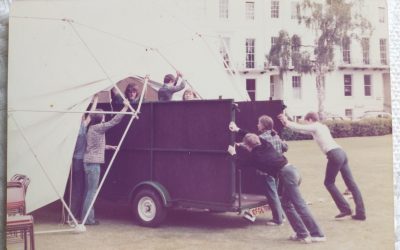Went to hear a consort of viols playing their own arrangement of Bach’s Goldberg Variations, which were written for a keyboard instrument. It’s such wonderful music that it has inspired various people to arrange it for different instruments – I have heard it done superbly by string trios using Sitkovetsky’s version, and I believe there’s a great recording by a saxophone quartet. The viol players said it had taken them several years of intermittent work to arrange it for five viols, and to resolve the disputes that arose during the process.
As a keyboard player myself, it was both strange and illuminating to see the parts dispersed about five players. It feels very different from all the challenges being faced by just one. In some cases, having several players made the structural workings clearer – for example in the canons, where it was easier to follow the different voices because they were played by different people. But the virtuosic writing felt more strenuous on a consort of viols, especially when the high register required them to play above the frets, an enterprise which was accompanied by a look of exquisite concentration on the players’ faces, as though the air had suddenly become more rarefied.
It reminded me that even playing the piece on the modern piano is an arrangement of a sort, because the instrument Bach had in mind was a two-manual harpsichord, meaning that it had two parallel keyboards, one slightly above and behind the other. This would have made it (somewhat) easier to play the many tricky variations where the hands have to cross one another at speed, because the player could play one keyboard with the right hand, and the other with the left. It is possible to play the Goldberg Variations on a single keyboard, as Glenn Gould and other pianists have triumphantly proved, but to the difficulty of the notes has to be added a special kind of spatial awareness, the fingers of the two hands hopping across one another like Scottish dancers leaping around their crossed swords.




Arrangements can often illuminate a piece greatly. Bach’s famous Toccata and Fugue in D minor for organ has been arranged for brass ensemble by the virtuoso ensemble German Brass. For the first time, one can hear all the parts and how they inter-connect and overlap with one another, which the muddiness (the reverberation) of the organ sound does not allow to be heard clearly.
I’ve also heard some two-part inventions arranged for small choral groups! Not sure about the Goldberg Variations played by saxophones, though…